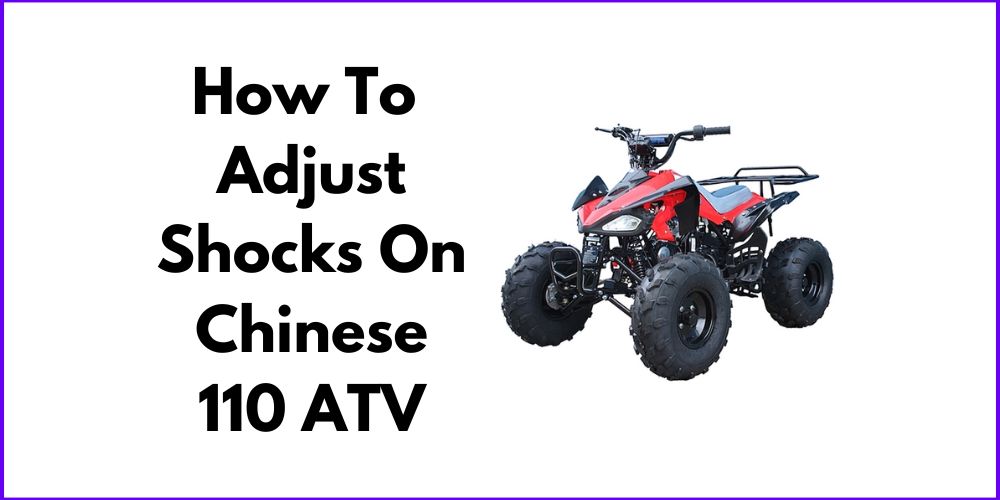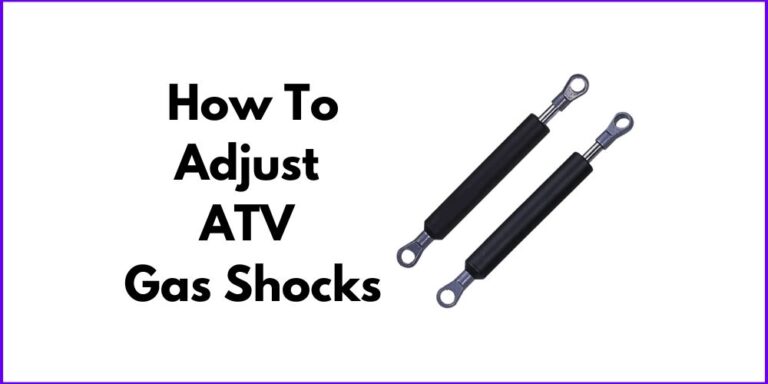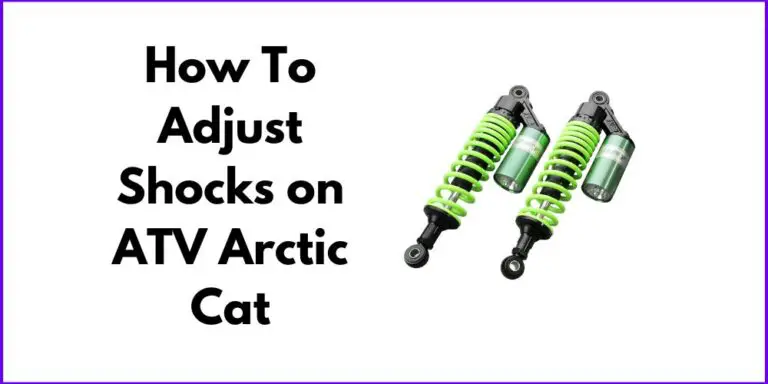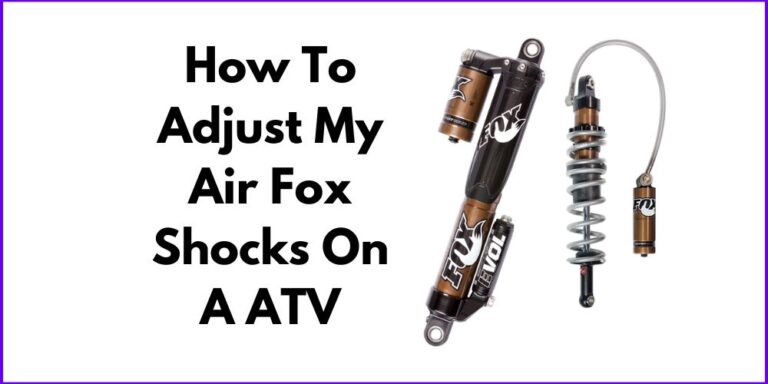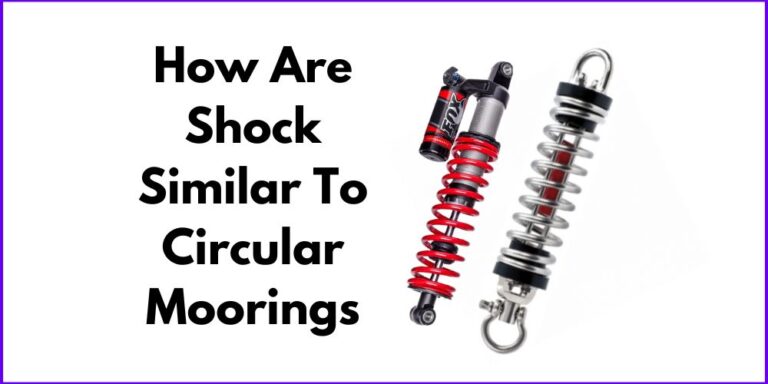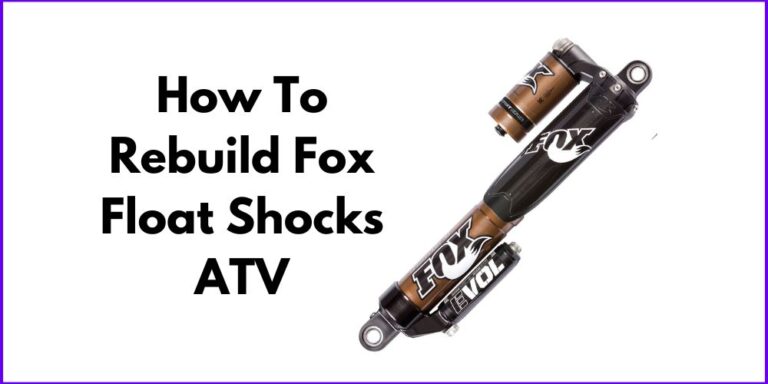Chinese 110 ATVs are popular for their affordability and versatility in off-road adventures. Properly adjusting the shocks is crucial for optimal performance and comfort. Shocks play a vital role in the ATV’s suspension system, absorbing impacts and ensuring a smooth ride. By adjusting the shocks, riders can customize the suspension to their preferences, improving handling, and traction, and reducing fatigue. In this blog post, we’ll explore the process on how to adjust shocks on Chinese 110 ATVs, providing step-by-step instructions and tips to enhance your ATV experience.
How To Adjust Shocks On Chinese 110 ATVs
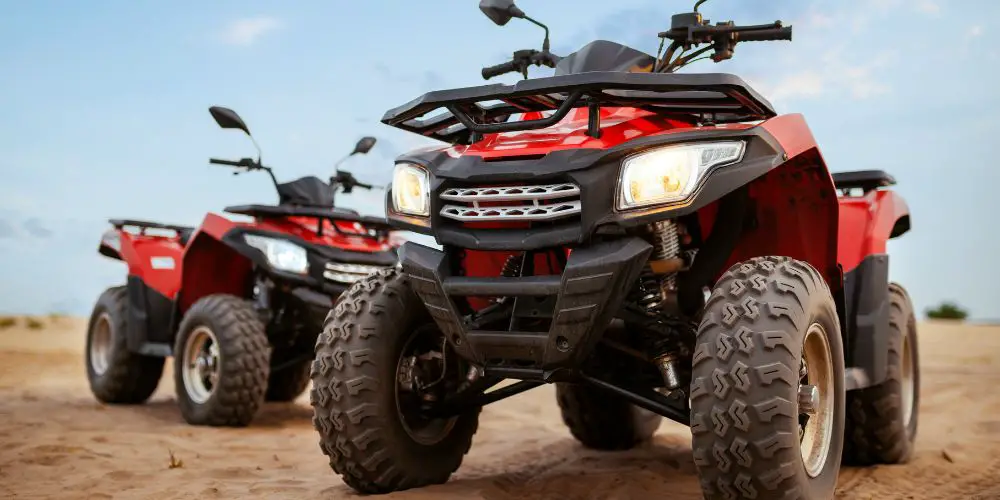
Understanding Shocks on Chinese 110 ATVs: Shocks are crucial for the suspension system of Chinese 110 ATVs. They absorb impacts, providing a smooth ride. Two common types of shocks found on these ATVs are coil-over shocks and air shocks. When adjusting shocks, factors to consider include riding style, terrain conditions, and rider weight. Considering these factors helps riders optimize their ATV’s performance and comfort.
Tools and Equipment Needed:
To properly adjust the shocks on your Chinese 110 ATV, you’ll need a few essential tools. Here’s a list of tools required for the adjustment process:
- Shock Adjustment Wrench: This specialized wrench is designed to fit the adjuster rings on the shocks. It allows you to change the preload and damping settings accurately.
- Socket Set: A socket set with various socket sizes will come in handy for removing and reinstalling bolts and nuts during the adjustment process.
- Allen Wrench Set: You’ll need an Allen wrench set to loosen and tighten specific bolts and screws on the ATV, such as those securing the shock mounts.
- Spanner Wrench: Some shocks may require a spanner wrench to adjust the preload. This wrench has pins or hooks that fit into the preload adjuster slots.
Optional equipment for more advanced adjustments:
If you’re looking to make more advanced adjustments to your shocks, the following optional equipment may be useful:
- Suspension Tuning Kit: A suspension tuning kit typically includes additional tools and accessories like fork seal drivers, damping rod holding tools, and rebound adjustment needles. These tools allow for more comprehensive shock adjustments.
- Shock Pump: A shock pump is used to adjust the air pressure in air shocks. This is useful if your Chinese 110 ATV is equipped with air-adjustable shocks.
Preparing for Shock Adjustment:
Before you begin adjusting the shocks on your Chinese 110 ATV, it’s important to take a few necessary steps to ensure safety and proper assessment. Here’s what you should do:
- Safety Precautions: Start by putting on appropriate safety gear, including a helmet, goggles, gloves, and protective clothing. Ensuring your safety should always be a priority when working on an ATV.
- Identifying Shock Locations: Familiarize yourself with the location of the shocks on your ATV. Typically, there are front shocks (located near the front tires) and rear shocks (positioned near the rear tires). Take note of their positioning and any adjustments you may need to make.
- Inspecting Shocks: Before making any adjustments, visually inspect the shocks for any visible damage or wear. Look for leaks, dents, or signs of excessive wear on the shock bodies and mounting points. If you notice any significant damage, it may be necessary to replace the shocks before proceeding with adjustments.
By taking the time to gather the required tools, ensuring safety, and inspecting the shocks, you’ll be well-prepared to begin the adjustment process. In the next sections, we’ll explore the specific steps for adjusting shock preload, compression, and rebound damping on your Chinese 110 ATV.
Adjusting Shock Preload:
Understanding preload and its effect on ATV suspension: Preload refers to the amount of tension or compression applied to the shock spring when the ATV is at rest. Adjusting the preload can alter the initial firmness or softness of the suspension. Increasing preload stiffens the suspension, while decreasing preload makes it softer. The right preload setting ensures the ATV rides at the desired height and maintains optimal suspension travel.
Step-by-step instructions for adjusting preload on Chinese 110 ATVs:
- Locate the preload adjuster rings on your shocks. They are typically situated near the top or bottom of the shock body.
- Using the appropriate shock adjustment wrench or spanner wrench, turn the rings clockwise to increase preload or counterclockwise to decrease preload.
- Make incremental adjustments, typically in half or full turns, and test the ATV’s ride height and suspension response after each adjustment.
- Continue adjusting until you achieve the desired preload setting. Remember that personal preference and riding conditions will influence the ideal preload level.
Tips for achieving the desired preload setting:
- Start with the manufacturer’s recommended preload settings as a baseline and make adjustments from there.
- Consider your weight and riding style when determining the appropriate preload. Heavier riders may require more preload, while lighter riders may need less.
- Aim for a balanced preload setting between the front and rear shocks to ensure even weight distribution and optimal handling.
- Test ride the ATV on various terrains to evaluate the suspension’s performance and make further adjustments if necessary.
Adjusting Compression and Rebound Damping:
Explaining compression and rebound damping and their impact on ATV performance: Compression damping controls how quickly the shock compresses when encountering bumps or impacts. Rebound damping, on the other hand, regulates how quickly the shock returns to its extended position after being compressed. Properly adjusting compression and rebound damping ensures a smooth and controlled ride by managing the speed of shock movement.
Step-by-step instructions for adjusting compression and rebound damping on Chinese 110 ATVs:
- Locate the compression and rebound damping adjusters on your shocks. They are often situated at the top or bottom of the shock body.
- Turn the adjusters clockwise to increase damping (slower movement) or counterclockwise to decrease damping (faster movement).
- Make incremental adjustments and test the ATV’s suspension response after each adjustment.
- Find a setting that provides a comfortable and controlled ride, considering both compression and rebound damping together.
Tips for fine-tuning compression and rebound settings:
- Start with the manufacturer’s recommended settings as a starting point and make adjustments based on your preferences and riding conditions.
- Adjust compression and rebound damping together to maintain a balanced and harmonious suspension system.
- Take note of how the ATV responds to different terrain and adjust the damping settings accordingly. Softer settings may be preferable for rough trails, while stiffer settings can improve stability on smoother surfaces.
- Keep a record of your adjustments and their effects to track your progress and find the sweet spot for your specific riding style.
By following these instructions and implementing the provided tips, you’ll be well-equipped to adjust the shocks on your Chinese 110 ATV for optimal performance, comfort, and control. Remember to take your time, test the adjustments, and make further fine-tuning as needed. In the next section, we will discuss the importance of testing and fine-tuning the adjusted shocks.
Testing and Fine-Tuning
Once you’ve adjusted the shocks on your Chinese 110 ATV, it’s crucial to test and fine-tune their performance. Testing allows you to evaluate the effectiveness of your adjustments and make any necessary refinements. Here are some important considerations for testing and fine-tuning your shocks:
- Importance of testing: Experience the impact of adjustments firsthand, make informed decisions, and improve handling, comfort, and ride quality.
- Suggestions for evaluation: Test on familiar terrain, note how the ATV responds to bumps, and assess suspension travel, rebound control, and stability.
- Further adjustments: Gradually refine the setup based on test ride results. Decrease preload or adjust compression for a softer ride, or increase preload or adjust rebound for more control.
Maintenance and Regular Checks:
Maintain your Chinese 110 ATV’s shocks for longevity and performance:
- Recommended routine: Clean shocks regularly, inspect for leaks, and lubricate as needed. Follow the manufacturer’s instructions and consider specific requirements.
- Periodic checks: Look for wear, damage, or performance changes. Verify adjustment settings and address issues promptly. Seek professional help if necessary.
- Signs of wear or damage: Watch for reduced travel, sagging, leaks, noises, or inconsistent damping. Get shocks inspected if problems arise.
By following a maintenance routine and conducting regular checks, you’ll ensure optimal shock performance for a great ATV riding experience.
Final Thoughts
In conclusion, adjusting the shocks on your Chinese 110 ATV is crucial for a better riding experience. By following the provided instructions and tips, you can enhance performance and comfort. Remember to prioritize safety, test and fine-tune the adjustments, and maintain the shocks regularly. Take the time to adjust your shocks and enjoy a smoother, more controlled ride on your Chinese 110 ATV.

